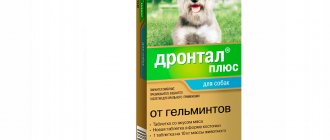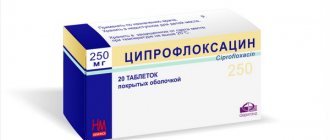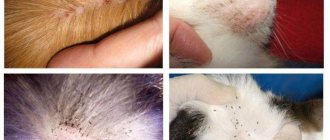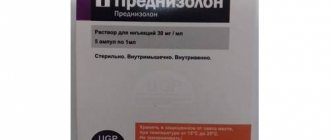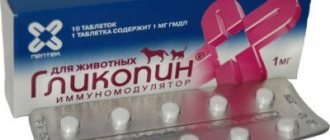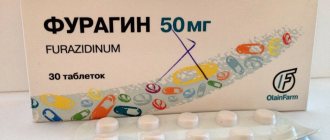Composition and properties
The drug Omez is sold in the form of tablets for oral administration and powder intended for the preparation of a suspension. The active component is omeprazole, the action of which is aimed at suppressing the secretion of hydrochloric acid and having a positive effect on stomach cells. The therapeutic effect in the cat’s body develops within an hour and lasts throughout the whole day. The active ingredient has a bactericidal effect on Helicobacter pylori and under its influence the symptoms are quickly relieved, the healing of defects in the gastrointestinal mucosa is accelerated and the remission of peptic ulcer disease is prolonged. "Omez" has good absorption, and food intake does not affect the bioavailability of omeprazole.
Features of the drug
The main active ingredient of this medicine is omeprazole. Essentially, it suppresses the secretion of hydrochloric acid, affecting the cells of the stomach. The key process of Omez’s effect on the cat’s body occurs within an hour. In this case, the result lasts about a day. And restoration of activity after withdrawal occurs after 4-5 days.
© shutterstock
It is worth noting that Omez has excellent absorption. The drug is available in the form of tablets and capsules. Less common is powder, which is intended for preparing a suspension. Additionally, the package contains instructions for using Omez for cats. It is important to follow the dosages indicated in it in detail.
Indications for use
There are several diseases for which cats should take Omez. The most common among them are:
- acute and chronic ulcers;
- pancreatitis;
- mastocytosis and others.
It is very important that the veterinarian conduct a preliminary diagnosis before prescribing Omez to the cat. Only in this case can the high chance of side effects and personal intolerance be eliminated
If any allergic reactions occur, you should immediately stop using Omez. It can be replaced with another remedy, for example, Kvamatel.
Contraindications
It is important to take into account some contraindications that are especially characteristic of this medication. Treatment of a cat with Omez is not recommended for:
- the presence of personal sensitivity to omeprazole;
- liver pathologies;
- taking a course with drugs that are incompatible with Omez;
- in cats - during pregnancy and lactation.
All of these factors must be assessed by a veterinarian. If any signs of overdose occur or there are any side effects, for example, vomiting, you should stop using the drug for your pet.
Precautions and side effects
Although Omez is generally safe and effective when prescribed by a veterinarian, Omez may cause side effects in some animals. Omez should not be used in dogs
with known hypersensitivity or allergy to the drug. Omez should be used with caution in animals with liver disease. Omez may interact with other medicines. Consult with your veterinarian to determine if other medications your pet is taking may interact with Omez. Such medications include diazepam, cyclosporine, digoxin, rifampin, ketoconazole, and ampicillin.
Adverse reactions to Omez are rare when recommended doses are prescribed. Occasionally, some animals may experience nausea, vomiting, flatulence, diarrhea, or loose stools.
Very rarely, omez has been associated with some urinary tract infections and nervous system changes in dogs.
Treatment
If your animal exhibits any of these symptoms, you should immediately go to the veterinarian's office. There the doctor will conduct an examination that will answer the question about her health.
Only a veterinarian can prescribe the correct use of the medicine. The dosage of Omeprazole for cats is very important. Typically, 0.5 mg of the substance is given per 1 kg of weight, once a day by mouth. However, it is necessary to check with the pharmacist; the instructions for use of Omeprazole for cats are the best way to study the medicine.
shutterstock
Omeprazole is generally well tolerated by cats. If your cat's acidity is low, it is better to give her beetroot or cabbage juice. Cottage cheese, which goes well with Omeprazole, and porridge with water are also perfect. In case of increased acidity, you should prepare steamed chicken or lamb meat and liquid soups for your cat. All this should be checked for compatibility with Omeprazole. After the end of the illness, it is necessary to smoothly transfer the cat’s diet to its usual regime.
However, some cat owners prefer to give special food rather than regular food. In this case, you need to take advice from your doctor about what food is suitable for a sick cat. In such cases, it is better to give special crackers or canned food - they are made for cats with gastritis. After the disease passes, you cannot immediately give the usual dry food - you should purchase a medicinal diet for cats, which is sold at a veterinary pharmacy.
https://youtube.com/watch?v=L7w_f3O6UBI
Dosage for dogs
Omez, capsules. Dose for dogs: 0.5-1 mg per 1 kg of animal weight, by mouth 1-2 times a day. How to give a pill to a dog?
Omez Insta, powder for preparing a suspension. Dose for dogs: 0.5-1 mg per 1 kg of animal weight, by mouth 1-2 times a day. The required part of the powder is mixed with a small amount of liquid and given forcibly. How to give liquid medications to a dog?
Omez, solution for injection. Dose for dogs: 0.5-1 mg per 1 kg of animal weight, intravenously, 1-2 times a day.
.
.
Omez Omeprazole for cats and dogs
How to provide first aid without causing harm? If you are constantly vomiting, there is no point in giving anything orally. Injecting Cerucal or Latran intramuscularly depends on the suspected cause of vomiting. If the animal is young, and theoretically it could swallow a foreign object, then it’s not worth it. Cerucal, as well as Latran or Serenia (less than Latran and Serenia) stimulate peristaltic movements of the intestines, and in the presence of a foreign body, there is a risk of perforation of the intestinal wall. In such cases, it is enough to relieve intestinal spasms with an injection of papaverine or no-shpa intramuscularly, at the rate of 0.1 ml per kg of weight (for dogs over 30 kg, the dosage per kg is 0.05-0.07 ml). Taking an h2-blocker (Zantac or Acyl) intramuscularly will not be superfluous; the weight calculation is the same as papaverine. In case of poisoning, when this is known for sure, it is logical to give an antiemetic drug. For cats, only latran (0.05-0.07 ml per kg of weight intramuscularly) or serenium (0.1 ml per kg of weight subcutaneously), cerucal causes an increase in pressure in them, dilation of the pupils and lack of coordination. An hour after the antiemetic, you can give enterosgel or polysorb (enterosorbent) orally, the amount of which should not be too large so as not to provoke vomiting (no more than 5 ml per 10 kg of weight, if it is enterosgel). A very dangerous situation is when an animal vomits blood or has intestinal bleeding. The first aid kit for a dog/cat should contain a hemostatic agent, dicinone or etamsylate (vicasol is ineffective as a hemostatic agent, since its action is much slower). These drugs are administered intramuscularly, at a rate of 0.07-0.1 ml per kg of animal weight. If you have konakion (vitamin K1) in your arsenal, then this remedy will be much more effective both in stopping intestinal bleeding and as an antidote when taking zoocoumarin (check the dose with your doctor, its calculation is more complicated). At high temperatures, the administration of analgin/baralgin to cats is, however, undesirable: these drugs cause hypersalivation in them (increased salivation)
Dogs can, but it is important to remember that they are painful when administered intramuscularly. For cats, an effective means of reducing fever can be subcutaneous injection of saline solution at the rate of 20-25 ml per kg of weight
Non-steroidal anti-inflammatory drugs (ketofen, flexprofen) are best administered after consultation with a veterinarian, but it is advisable to have them in your home medicine cabinet. With concomitant gastritis or pancreatitis, the use of these drugs can be harmful to the mucous membranes of the stomach and intestines.
For intestinal spasms, in addition to papaverine/no-shpa, rectal suppositories Buscopan (medicine) will be useful, at the rate of one suppository (10 mg) per 10 kg of dog weight (they should not be used for cats), and also, if there is no urge to vomit, trimedate or duspatalin at the rate of 10 mg per 1 kg of dog weight, orally, twice a day (also, not for cats). In case of loss of consciousness, it is advisable to ensure patency of the airways, and you can irritate the nasal septum with the tip of the needle - this is a very sensitive place with many nerve endings
This will stimulate the respiratory center, which is important for low blood pressure. This method is used in people by rescuers of the Ministry of Emergency Situations
Another common “problem out of the blue” is an animal swallowing a foreign object (a fragment of a toy, a bone). If this happened literally before your eyes, it makes sense to induce vomiting if a soft object is swallowed (if it is a bone, especially with sharp edges, antiemetic should not be done, as there is a risk of injury to the esophagus) using hydrogen peroxide 1.5% (1:1 boiled water and 3% peroxide) or give a saturated saline solution inside (a spoon of table salt per 20 ml of water on the root of the tongue). For consultation in these or other cases, you always have the opportunity to call the Vetendocrine service.
Vladimirov Vladimir Anatolyevich, veterinary physician-endocrinologist.
Possible restrictions and side effects
The official instructions for use describe the following conditions, in the presence of which it is better not to give Omez to a cat:
- personal sensitivity to the components of the drug;
- liver diseases;
- lactation period and pregnancy.
In addition, the medication is contraindicated for pets who are being treated with pharmaceuticals that are incompatible with Omez tablets. When the medicine is used correctly, the treatment proceeds well and no negative reaction occurs in cats. But if you neglect the dosages recommended by your doctor and do not take into account the list of contraindications for taking Omez, the purr may experience the following undesirable effects:
In some cases, after such therapy the pet becomes aggressive.
- urge to vomit;
- angioedema, anaphylactic shock;
- aggressiveness;
- confusion;
- headache, vertigo;
- drowsiness, malaise;
- violation of taste preferences;
- deterioration of visual function;
- bronchospasm;
- dry mouth;
- painful discomfort in the abdomen;
- stool disorders;
- muscle weakness;
- swelling of the lower extremities.
Omez indications for use
To find out about the drug Omez (see photo below) - the indications for its use are wide - you should consult a doctor for a full examination. It is advisable to perform an endoscopy of the stomach and duodenum to identify abnormalities or the initial stage of cancer. This is due to the fact that the medicine can hide the symptoms of cancer, so treatment with it can make it difficult to make a diagnosis.
Find out about the drug Omez - what the substance is used for according to the annotation. Indications:
- with stomach and duodenal ulcers and their exacerbations;
- erosion of the walls of the stomach;
- peptic ulcers that arise from taking non-steroidal drugs that prevent inflammation;
- ulcers caused by stress;
- Zollinger-Elisson syndrome;
- erosion of the upper stomach and esophagus with cirrhosis of the liver;
- an infection that has destroyed beneficial bacteria in the stomach lining;
- treatment of gastritis and heartburn.
Review of Omez (Prilosec®) for Dogs
Omez, commonly known under the brand name Prilosec®
, used to treat and prevent ulcers of the stomach, esophagus and intestines in dogs.
The newer drugs (OMEZ) used to treat ulcers and heartburn (acid reflux from the stomach) belong to a class of drugs called proton pump inhibitors. Omez is such a drug and is used to treat and prevent stomach ulcers in dogs.
Omez inhibits the movement of hydrogen ions, a component of hydrochloric acid in the stomach. Thanks to this effect, omez blocks acid secretion in the stomach. This creates a more favorable stomach pH for ulcer healing. The duration of action of omez is 24 hours.
Omez is a prescription drug and can only be obtained from a veterinarian or with a prescription from a veterinarian.
What is Omez prescribed for and how to take it
Today, advertising is replete with all kinds of medicines existing on the Russian market, for all ailments. It is difficult for an uninitiated person who does not have certain knowledge to understand this flow of information.
Omez, a remedy that is said to effectively treat stomach ailments, was no exception.
Let's try to figure out what kind of medicine this is, why it is prescribed, the properties of the drug, what it helps with, how it is taken, whether it is possible to give capsules and powders to a dog (cat), whether there are cheaper analogues, and other issues.
Composition, release form
Omez (in Latin OMEZ) is an antiulcer drug, the main active ingredient of which omeprazole has a restorative and stimulating effect on the walls of the stomach and duodenum. The product also contains excipients such as mannitol, lactose, sucrose, hypromellose and others. The form of release of the drug is different:
- Instantly coated tablets;
- Capsules, highly soluble under the influence of gastric juice;
- Powder recommended for dissolution in a certain amount of liquid before use;
- Solution for injection - used intravenously;
- Special drops.
The manufacturer of the product is India, more detailed information about which can be found on the online resource Wikipedia.
Indications for use of the drug Omez
Let's figure out why Omez is prescribed? The main indications for use of the drug are:
- Stomach ulcer;
- Gastritis (acute and chronic);
- Erosion of the gastrointestinal tract;
- Oncological diseases;
The medicine is used effectively for heartburn, pancreatitis, and low acidity of the gastrointestinal tract. It is also indicated for the treatment of Zollinger-Ellison syndrome.
Omez: instructions for use
You can take the drug correctly only as prescribed by your attending physician and in accordance with the dosage indicated in the prescription. Omez is usually prescribed in a daily dose not exceeding 20 mg.
For gastritis, stomach ulcers, heartburn, erosion, poisoning, oncology, it is better to drink it in the morning, in the first half of the day before meals; a method other than this can only be prescribed by a specialist.
The course of treatment is also determined by the doctor - gastroenterologist or therapist; as a rule, it is about 2 weeks (14 days). Alcohol is strictly contraindicated during this period.
It is not recommended to give the substance to a dog or cat, since it is not used in veterinary practice.
During pregnancy, how to take?
During pregnancy, the drug is definitely contraindicated, especially in the early stages. It should also not be used while breastfeeding.
If you have gastritis, should you take Omez before or after meals?
How long can you take Omez without a break? The time course of treatment with this drug is determined by your doctor. And to the question of how long you can take it without a break, the answer should be given by a specialist and expert in the medical field. Typically this continuous period does not exceed 14 days.
Analogs
Today, pharmacies offer the consumer all kinds of substitutes - analogues of the Indian product (in everyday life they are called synonyms), including Swiss, German manufacturers, as well as those made in Russia.
Domestic analogues, by the way, are very popular, since the composition differs slightly, and the cost is much lower, which plays an important role for the local consumer.
Such drugs of this pharmacological group include specimens from the list:
- Ranitidine;
- Omeprazole;
- Losek Maps;
- Ranitidine;
- Nolpaza;
- Omezol;
- Ultop;
- Orthanol;
- Nexium;
- Famotidine;
- Emanera;
- Control;
- Almagel;
- Kvamatel;
- Maalox;
- Duspatalin;
- Phosphalugel.
Searching for cheaper analogues is not always the right decision, especially if the doctor himself prescribed a particular medication.
The difference may seem insignificant to you, but a substitution in one or two components of the composition will be significant for the body.
As for the price, it is necessary to immediately indicate the amount for which you can afford treatment. And then the question related to cheaper medications will not arise for you after leaving the specialist.
Source
Omez Omeprazole instructions for use
The drug is available in various forms: tablets, capsules, powder for suspension and solution for injection. Tablets and capsules contain 10 mg, 20 mg or 40 mg of active ingredient.
Dosage
The standard dosage is from 0.5 mg to 1 mg per 1 kg of dog weight.
The medicine is used one to two times a day. Of course, the veterinarian will tell you more precise norms and dosages depending on the severity of the dog’s condition and the results of the examination.
How to give?
Giving your pet pills is not an easy task, especially when their stomach hurts and they don’t want to eat. One way or another, this must be done, although the process looks a little violent:
- you need to open the dog's mouth;
- place the tablet or capsule on the base of the tongue;
- raise your head, stroking your pet's throat.
The dog will reflexively swallow the pill.
If Omeprazole is purchased in powder form, you need to thoroughly dissolve it in a small amount of warm (the substance does not dissolve well) water and try to pour it into the mouth or onto the tongue. A crushed tablet or the contents of a pill is also suitable for preparing a suspension.
Side effects
There are no known cases of overdose.
The drug acts almost instantly - the effect occurs after half an hour and lasts throughout the day.
Starting to take Omeprazole may cause diarrhea, which will soon go away.
You need to understand that the product relieves high acidity, but it will not cure ulcers or gastritis alone, but will only hide the symptoms.
Therefore, if giving the dog only it means causing a short-term improvement in the situation, in the long run the pet will only get worse. You need to contact a veterinarian and not delay treatment.
In pharmacy chains, the drug is sold in the form of capsules, tablets or injections. At home, enteric capsules of this medicine are most often used.
Capsules come in 10 mg and 20 mg of active substance (omeprazole) in one capsule. The capsules also contain excipients: granulated sugar (43 mg), sodium carboxymethyl starch (type A) 2.5 mg, sodium lauryl sulfate 3.03 mg, povidone-K30 4.8 mg and others.
The method of administration and dose depend on the type of disease. Here are the most popular capsules for adults as an example:
- Exacerbation of stomach and duodenal ulcers. 20 mg 1 time per 24 hours for 5-7 weeks (according to condition and tests).
- Gastroesophageal reflux disease (abbreviated as GERD).mg for weeks. For chronic illness, longer use is possible (with breaks).
- Zollinger-Ellison syndrome. The dosage is determined by your doctor based on your medical history. The dose can reach up to 3 capsules per day, 20 mg per day.
1Use of the substance Omeprazole
erosive and ulcerative lesions of the stomach and duodenum associated with taking NSAIDs; prevention of erosive and ulcerative lesions of the stomach and duodenum associated with taking NSAIDs, prevention of stress ulcers; reflux esophagitis; long-term monitoring of patients with cured reflux esophagitis; gastroesophageal reflux disease; Zollinger-Ellison syndrome.
1Characteristics of the substance Omeprazole
Omeprazole is a racemic mixture of two enantiomers. White or off-white crystalline powder, highly soluble in ethanol and methanol, slightly soluble in acetone and isopropanol, very slightly soluble in water. It is a weak base, its stability depends on pH: it undergoes rapid degradation in an acidic environment, relatively stable in an alkaline environment. Molecular weight - 713.12.
Pharmacological action: antiulcer, proton pump inhibitor.
Inside, intravenously. Adult patients: duodenal ulcer; prevention of relapse of duodenal ulcer; stomach ulcer; prevention of recurrence of stomach ulcers; erosive and ulcerative lesions of the stomach and duodenum associated with Helicobacter pylori (as part of complex therapy);
erosive and ulcerative lesions of the stomach and duodenum associated with taking NSAIDs; prevention of erosive and ulcerative lesions of the stomach and duodenum associated with taking NSAIDs, prevention of stress ulcers; reflux esophagitis; long-term monitoring of patients with cured reflux esophagitis; gastroesophageal reflux disease; Zollinger-Ellison syndrome.
Cat with chronic renal failure. Help with a treatment plan!
Hello! I really need qualified help! Our cat, a handsome 12-year-old, is seriously ill. The story is like this. Last November, my appetite began to suddenly disappear. First I chose my favorite, then I ate a little of it. At the end of November we took him to the veterinary clinic. They made a diagnosis of constipation, they advised against doing tests - they say, everything is clear here... They treated this same constipation for two weeks. After stopping the treatment (we were injected with hormones there), four days later we refused to eat again. They took me to another clinic, where they already did the tests. Results 12/25/13: blood biochemistry creatinine - 832.5 (normal 60-110) urea - 52.4 (normal 4.8 - total bilirubin - 3.3 (normal 0-4) general blood test hemoglobin 83.5 ( normal 130-180) leukocytes 8.6 (normal 5.5-12) ESR 10 (normal 0-5) leukocyte formula (normal in parentheses) w 0 (0-1), n 0 (0-3), s 63 (40-45), l 31 (15-46), m 2 (0-5), e 4 (0-5), b 0 (0-1) Ultrasound: chronic hepatitis, chronic glomerulonephritis Treatment: daily saline 100 ml, piracetam - 2 ml, riboxin - 2 ml, B12-2 ml, glucose 5% - 1 ml, gordox - 1 ml. All this for 4 days intravenously and 4 days subcutaneously (the cat had a hard time after intravenous injections). 5 times from Epoxyl 0.5 ml was added to them. Additional furasemide 0.3 ml was given several times (sometimes he peed 2-3 times a day). The cat felt better. Little by little he began to eat on his own. Like many, I have a problem with Renal Royal Canin food. But and they managed to feed him up to 100 grams of wet food per day (we had to add his favorite meat, cucumber, bell pepper.) After eight days, test results on 01/02/14: blood biochemistry creatinine - 754 (normal 60-110) urea - 36.5 (normal 4.8- bilirubin total. - 4.6 (normal 0-4) amylase - 1228 (normal 400-850) general blood count hemoglobin 123.4 (normal 130-180) leukocytes 6.5 (normal 5.5-12) ESR 59 (normal 0- 5) leukocyte formula (normal in brackets) c 56 (40-45), l 39 (15-46), e 5 (0-5) After the tests, the regimen was slightly changed - saline 100 ml, piracetam - 2 ml, riboxin - 2 ml, B12-2 ml, the rest was canceled (they said they already received a lot of antibiotics?!). Canephron was added, 3 drops 2 times a day. In agreement with the doctor, I added herbs - an infusion of bearberry and orthosiphon stamen. They infused it intravenously, the cat tolerated it well. We were also advised to drip subcutaneously a second time a day - up to 100 ml. His condition is unchanged, his activity is below average, but he still shows interest in his surroundings and eats the same way. Analysis 01/10/14: blood biochemistry creatinine - 873 (normal 60-110) urea - 30.9 (normal 4.8 - total bilirubin - 2.1 (normal 0-4) amylase - 2012.6 (normal 400-850 ) general blood test hemoglobin 81.7 (normal 130-180) leukocytes 6.3 (normal 5.5-12) ESR 30 (normal 0-5) leukocyte formula (normal in parentheses) p 1 (0-3), s 68 (40-45), l 30 (15-46), m 1 (0-5).And then they told us - that’s it, now how long will the body’s reserves last... We continue to drip (saline solution + riboxin + piracetam + B12) , only I’m at a loss - in our condition, how to drip? I tried to switch completely to subcutaneous - I lost my appetite, occasionally selects pieces. We bought dry renal, we haven’t fed dry before, it seems to be gnawing a little at a time. I found your site, I already added: in for a week we give enterosgel (1 tsp 2 times a day), for three days I give kvamatel (1 mg/kg body weight per day) and almagel (1-1.5 ml 2-3 times a day). For ten days we’ve been giving folic acid , we continue canephron. I don’t give the herbal infusion yet (after 15 days I decided to take a break). I don’t take furasemide, he pees 5-6 times a day, the stool has improved for a week now (he poops daily). The pressure is normal (they didn’t measure it, they just listened with a fanendoscope). It seems that nausea has appeared - I vomited three times in the morning (not every day). Please tell me - do I need to change/add any other medications? And how to still drip. Our doctors say - if he pees, then up to 1 liter per day! Will I drown the cat's lungs? How many ml intravenously? and should I drip subcutaneously a second time? I’m confused... There are cats with much better tests in the topics, it’s difficult to transfer their treatment to us. Please adjust our treatment! By the way, our doctors don’t want to hear about Enterosgel and Kvamatel. It’s impossible to connect Ketosteril and Renalcin (I’m afraid they won’t have time to arrive by mail, but we haven’t heard of them).
Dosage for cats
It is not surprising that many owners are concerned about how to give Omez to a cat. Few animals will agree to voluntarily take medication. The method of administration depends on the form of the medicine. For example, the capsule can be mixed with soft food. But you need to prepare a suspension from the powder and forcefully pour it in. As for tablets, they are most often crushed and mixed with food or water.
shutterstock
Storage Features
Omez for cats will retain its positive properties only if stored correctly. The main thing is to put the medicine in a dark, dry place. Permissible temperature – up to +25 degrees
It is important to ensure that children and animals do not have access to the medication. It should also not be stored near food.
When using Omez for pets, you should understand that the medicine can either help or harm the cat. Therefore, you must strictly follow the veterinarian’s instructions and the information on the packaging. Only in this case will therapy bring the desired result.
How to store?
The preservation of its therapeutic effects until the end of the shelf life depends on the correct storage of the drug. Therefore, the Omez package should be placed in a dark, dry place where the air temperature does not rise above 25 degrees Celsius. Small children and animals should not have access to the medicine, and tablets and powder should not be placed near food. The shelf life is 3 years, after which the use of Omez is strictly contraindicated.
Application of quamatel
The dosage for each patient is selected individually by the veterinarian, depending on the effects that the drug should have on the body, weight, age, gender, general condition and many other indicators. Self-medication and incorrect “amateur” diagnosis can cause harm.
If you confuse a dog’s symptoms, make a mistake and make an incorrect diagnosis (for example, if you confuse a hyperacid type of gastritis with a hypoacid or, even more so, anacid), then nothing good will end. As mentioned earlier, violation of the dosage and abuse of quamatel can lead to negative, in some cases tragic, consequences. Therefore, it is highly not recommended to give it to an animal yourself.
The effect of quamatel can be extremely negative when interacting with other drugs and medications, the absorption of which is directly affected by the amount and acidity of gastric juice. In addition, the simultaneous use of other drugs that directly act on reducing the level of gastric acidity can lead to the quality of absorption of quamatel. But still, if you strictly follow the course prescribed by a specialist, the animal will tolerate the use of the drug quite well, and there is no doubt that competent treatment will only be beneficial.
>Storage conditions
Kvamatel must be stored in a place protected from direct sunlight, away from animals and children, at a temperature of +10°C to + 25°C.
Omeprazole analogues, synonyms and group drugs
Copyright © Belka - veterinary care at home for cats and dogs in Moscow
Can be used with antacids. Slows down the absorption of ampicillin, itraconazole, ketoconazole, and iron supplements. Slows down the elimination and enhances the effect of warfarin, diazepam, phenytoin.
Taking drugs that inhibit CYP2C19 and CYP3A4 (for example, clarithromycin and voriconazole) may increase the serum concentration of omeprazole, and taking inducers of these enzymes (for example, rifampicin and St. John's wort) may decrease it.
Strengthens the hematotoxic effect of chloramphenicol, thiamazole (Mercazolil), and lithium preparations. The combined use of omeprazole and clopidogrel leads to a decrease in the therapeutic effect of clopidogrel. The combined use of omeprazole and digoxin can lead to an increase in the effect of digoxin by 10%. Caution should be exercised when co-prescribing drugs, especially in elderly patients.
Plasma levels of nelfinavir and atazanavir are reduced when administered concomitantly with omeprazole. Concomitant use of omeprazole and nelfinavir is contraindicated (see section “Contraindications”). Significantly reduces the absorption of posaconazole and erlotinib; co-administration of these drugs with omeprazole should be avoided.
Stomach diseases in cats
The most common disease in cats is inflammation of the gastric mucosa, also called gastritis. It mainly affects adults, but kittens can also get it.
shutterstock
To protect your pets from this terrible disease, you need to know the causes of its occurrence.
The following factors are considered:
- Food too hot or too cold. Cats have a very weak mucous membrane in the stomach, so food for cats should be moderately cooled.
- Long-term stress also negatively affects the health of the animal.
- Poor quality food.
- Too much food has a negative effect on both humans and cats.
- Worms and bacteria.
- A large presence of hairballs in the cat's stomach.
- Some medications have side effects that lead to inflammation. If gastritis may develop due to the medications given to your cat, it is necessary to consult a doctor after the course of treatment.
Forms of gastritis in cats
Acute gastritis, as I mentioned above, develops suddenly. The gastric mucosa becomes swollen and reddened. Increased secretion of mucus begins, which prevents food from interacting with gastric juice. As a result, it is not the breakdown of food that occurs, but its fermentation and rotting and, as a result, decay products and gases that poison the animal’s body are formed. With chronic gastritis, constant specific changes occur in the cat’s body, namely: the formation of gastric juice is disrupted, either its insufficiency occurs or, on the contrary, hypersecretion; the walls of the mucous membrane are damaged, and the vessels in the stomach become fragile, which carries the risk of bleeding.
Uremic gastritis in cats is a consequence of kidney disease. When the kidneys fail to cope with their work, the body itself begins to be poisoned by the products of protein metabolism. Urea accumulates in the gastric juice, which leads to uremic gastritis.
Eosinophilic gastritis rarely develops in cats and is caused by allergies, the presence of artificial dyes in food, medications, etc. With this type of gastritis, the stomach becomes inflamed due to the accumulation of eosinophils in the mucous membrane. Eosinophils are blood cells that sharply increase in the body during allergic conditions and helminthic infestations.
When a cat has gastritis, the acidity of the gastric juice may change; as a result, gastritis can be with high, low or normal acidity. This is a very important factor when prescribing treatment.
How does Kvamatel affect the body?
Kvamatel contains an active substance - famotidine, which blocks histamine H2 receptors. It also has a whole list of effects on the body:
- Blocks histamine receptors located in the gastric mucosa, which in turn reduces the secretion of gastric juice and its acidity.
- Regulates the production of pepsin (an organic substance produced by the stomach glands for digestion) in the body;
- Used to treat gastric and duodenal ulcers.
- Eliminates disorders caused by high levels of stomach acidity.
- It prevents peptic ulcers, stomach disorders and digestive system problems, including internal bleeding.
- Treats gastroduodenitis of the erosive type.
- Blocks various negative processes that can occur in the body in case of bleeding in the digestive system.
- Treats acute gastritis, which is accompanied by increased secretion of gastric juice.
- It affects both the cause of diseases and removes symptoms.

